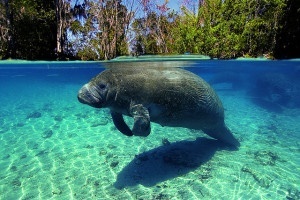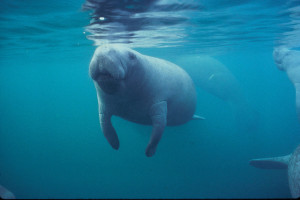We have much more to do and your continued support is needed now more than ever.
Toxic Algae: Florida’s Manatees in Crisis

photo by Flickr, ASCOM Prefeitura de…
In manatees the effect is even worse, and has claimed the lives of 276 of the mammals near Florida this year alone. As the algae settles on the manatee’s food sources like sea grass, it finds its way into their regular diet. The resulting poison hampers their coordination, and leaves many manatees drowning, unable to surface for another breath. There also is evidence to suggest these blooms feed on nutrient pollution, and may be increasingly toxic due to climate change. All of this is just part of a tragic picture for manatees, as this is just one cause in the deaths of a record-breaking 769 manatees in 2013. That’s 15 percent of North America’s manatees!
A Murder Mystery?
In another part of Florida, a separate crisis within the Indian River Lagoon a crisis continues to unfold, with more than a 112 manatees dying without apparent cause since July 2012.

A Larger Problem
Together with the tragically growing number of stillborn and underweight calves this year, and the manatees of Florida are clearly in crisis. Our first step to averting further tragedy may start simply with understanding. Supporting more research into the Lagoon’s crisis could help us better understand how we may address it. Most important of all is simply ensuring that the waters the manatees swim in and the sea grass they eat is not stained with toxins. Before this year there were roughly 5,000 manatees near Florida, the result of years of careful conservation efforts. Now all of this work is being thrown into jeopardy.
![]() Help ensure that manatees and other wildlife have their habitats properly restored and protected.
Help ensure that manatees and other wildlife have their habitats properly restored and protected.





















